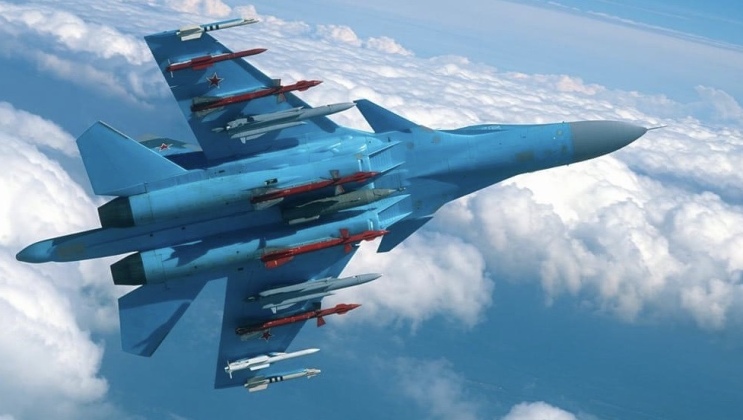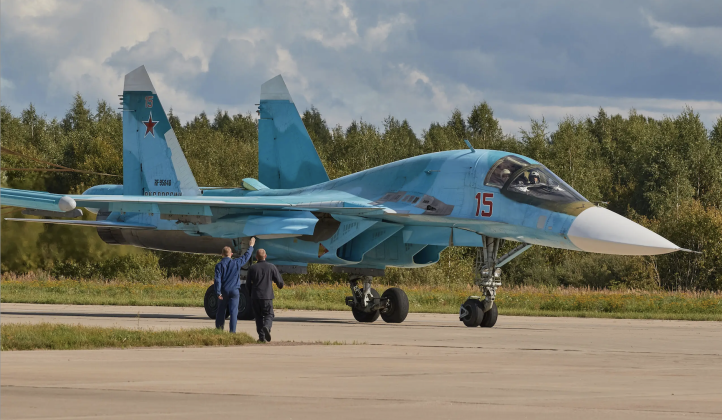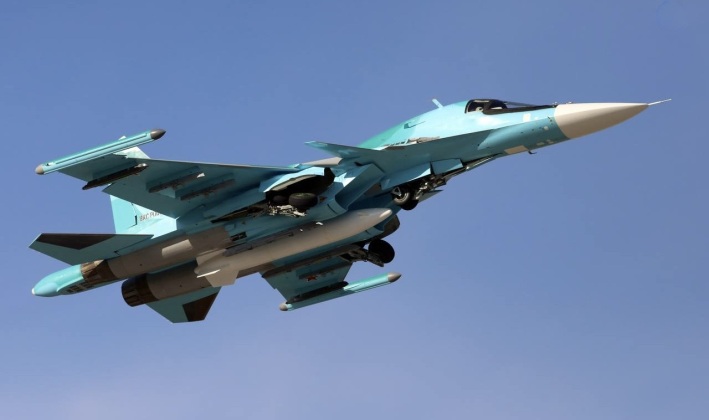News
Russian Air Force Receives World’s Heaviest Fighters as New Su-34M Jets Joint the Fleet
The Russian state run United Aircraft Corporation has delivered a new batch of Su-34M strike fighters to the Russian Aerospace Forces, as a continued production surge has raised delivery rates to unprecedented levels. The Su-34 has been procured in much greater numbers than any other fighter class since the disintegration of the Soviet Union, and is a derivative of the Su-27 Flanker heavyweight air superiority fighter designed with a significantly longer range and higher weapons carrying capacity and an approximately 50 percent greater weight. The aircraft have been relied on particularly heavily to support the ongoing war effort in the Ukrainian theatre, and have frequently been filmed launched intensive bombardment of Ukrainian and allied Western forces, including with FAB-3000 3000 kilogram glide bombs, bombs with thermobaric warheads, and a range of air-to-surface missile types. Su-34s are also heavily relied on to form part of the air arm of the Russian nuclear triad, and are capable of striking targets across Europe and much of the United States.

Commenting on the delivery, the state arms export conglomerate Rostec noted that the aircraft had successfully completed all required ground and flight tests, and that production of further units remains on schedule. Rostec further reported.
“The Su-34 multirole bomber has long become a legend. This aircraft combines high manoeuvrability, a wide range of weapons, and the ability to operate effectively in any conditions. During its use in the special military operation, it has confirmed its status as the best in its class and remains one of the key elements of Russia’s combat aviation. We understand the high demand for this aircraft in the armed forces. Our aviation plants are not reducing the pace of Su-34 production and regularly deliver new aircraft to the customer, strengthening the country’s defence capability. New deliveries are planned before the end of the year.”

Further commenting on the delivery, a Su-34 pilot from the Russian Aerospace Forces was quoted emphasising the aircraft’s versatility and the particularly intensive combat testing which it had been put through, stating: “This aircraft allows us to carry out combat tasks across the entire speed range,” the pilot said. “In the special military operation, it has proven itself in the best way. We can employ both guided and unguided aerial weapons.” The Su-34’s scale of production has more than doubled since early 2022 to an estimated 30 per year. Su-34s produced since 2020 have been built to the Su-34M standard, which has significantly superior air-to-air and reconnaissance capabilities alongside its greater performance for strike missions. In July 2025 it was revealed that three variants of the Sych universal reconnaissance pod system allows the aircraft to collect real-time intelligence while still remaining armed for strike operations.

The Su-34 fleet is expected to reach over 300 aircraft by the middle of the 2030s, although the aircraft is expected to face competition for funding as the Su-57M1 fifth generation fighter moves into production on a larger scale, and as the much delayed PAK DA bomber begins to enter service near the end of the decade. The possibility remains significant that the fleet will reach well over 400 aircraft. Su-34 production is currently underway both to phase the older Su-24M strike fighter out of service, and to equip new regiments in the Aerospace Forces. The aircraft has also been confirmed to be scheduled for delivery to Algeria, which is expected to procure close to 40 to replace its Su-24M fleet. Further export deals are expected, with North Korea seen as a leading potential candidate which would allow it to phase out its H-5 bomber fleet.












